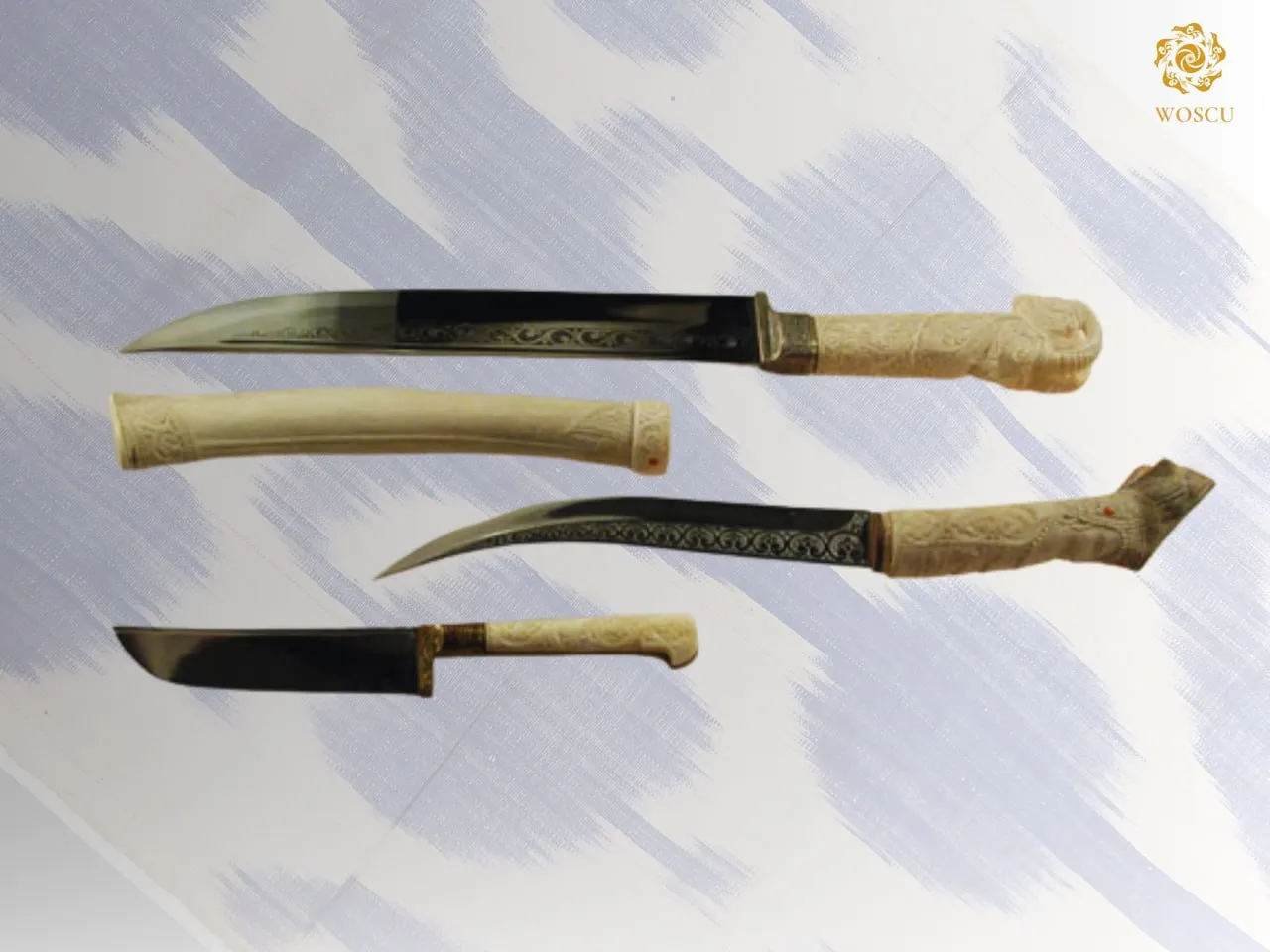
Uzbek knives are quite distinctive, combining artistic merits of appearance and functionality. High-quality steel is always used for making knives. Typically, the blade is straight, sometimes slightly curved like a willow leaf, ranging from ten to twenty centimeters in length, depending on its purpose. It is never double-edged, decorated with engraving or embossed ornamentation. Some knives feature a groove along the top edge of the blade. Handles may be smooth or ridged, made of hardwood, bone, or horn, simple plastic, or plexiglass. Decorations on the handle could include inlays of mother-of-pearl, silver, or colored glass, embossing, or engraving. The primary materials used in making the kinbok sheaths are leather and leather substitutes, which are decorated with embossing, appliqué, or embroidery.
Museum samples of Khivan knives with metal kinboks, adorned with embossing, represent a special artistic value and rarity. Following centuries-old traditions, craftsmen richly ornament their products with decor that spirals from the handle base along the blade to its sharp tip. The precision of the embossed ornamentation is comparable to the art of Khorezm jewelers.
For a long time, the craftsmen-knife makers from the village, now the city of Chust, have been famed for their knives. Their products are popular due to their high quality, refined, and proportionate shapes. Chust knives with handles made from animal horns or plastic, decorated with intricate floral ornaments, are prominently featured in the Museum's collection. Besides Chust, knives are produced in the valley in neighboring Andijan, Shahrikhan, Kokand, and other cities. Knives made by Tashkent master A. Nishanov, with blades engraved with the islimi ornament, are of considerable interest. Particularly original are the handles of his works. One of them features a cap in the shape of a mountain goat’s head - tog echkisi. Another knife in its sheath depicts a figure of a Karakalpak girl in an ancient wedding outfit kizil-kimishek and a high headdress saukele.
The decor is enhanced with coral inserts. Unique are the knives with silver blackening, made by Shahrikhan craftsmen: their handles depict a lion, a leopard, a lamb, and plant patterns. The handles and sheaths are made of yellow brass. The end of the handle of the dagger - khanjar - "Burgut" by G. Mutaalipov is adorned with a stylized image of an eagle's head, which determined the name of the item. The handles and sheaths are decorated with embossing and engraving. The pattern is floral-plant. The finish uses inserts of red and green plastic eyes. On the blade of a saber - kilich - made by A. Kasymov, two lions roaring at each other are depicted. On the blade of a saber made by T. Hakimov, images of an eagle and a hare are engraved.
You can learn more about the topic in the book-album "The Collection of the State Museum of Applied Art and Handicraft’s History of Uzbekistan" (XXXIX volume) from the series "The Cultural Legacy of Uzbekistan".
The main sponsor of the project is the oilfield services company Eriell-Group.
